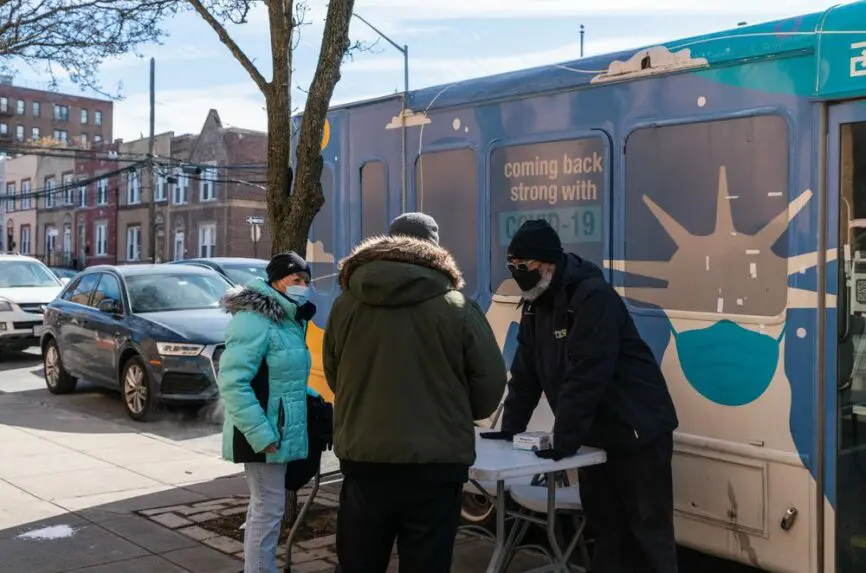Hastings Center News
Advancing Vaccine Equity: Lessons Learned from the Federal Health Center Covid-19 Vaccine Program
How did federally funded nonprofit primary care centers for medically underserved patients promote equitable access to Covid vaccination? A new publication examines this question and reveals valuable lessons for supporting just vaccine allocation and improving health equity in the United States.
The report is co-authored by Hastings Center research scholars Carolyn P. Neuhaus and Nancy Berlinger; research associate Danielle Pacia; Johanna Crane, of Albany Medical College; and Rachel Fabi, of SUNY Upstate Medical University. The research was supported by The Hastings Center’s Gil Omenn & Martha Darling Fund for Trusted and Trustworthy Scientific Innovation.
After receiving funding from President Biden’s American Rescue Plan, the federal government allocated vaccine supply directly to health centers to improve vaccine equity. Through interviews with key informants at federally qualified health centers (FQHCs) in New York and Tennessee, the researchers found that the health centers employed a range of strategies to mitigate barriers to accessing vaccines, respond to patients’ concerns, and foster trust with patients in a climate of uncertainty and fear during the early vaccine roll-out to the general population.
Community health centers responded to several barriers to vaccine access. They augmented online booking systems—a source of barriers for people who lack internet access or familiarity with telehealth systems or are uncomfortable disclosing personal information in this way–by enabling patients to make vaccination appointments by phone and in person. And they eased transportation limitations and time constraints by providing vaccination information in workplaces and churches and implementing mobile and weekend vaccination clinics.
Community health providers and staff also listened and responded to patients’ concerns and fears about the new vaccine with respect. One respondent described the challenge of “trying to figure out how to address [the patient’s] concerns without making her feel like, okay, that’s just ridiculous.”
Major takeaways from this study:
- Successful community vaccination efforts involve collaboration with community leaders, employ community health outreach workers, make direct contact with community members, and use pop-up and mobile clinics to facilitate access.
- FQHCs hold lessons for other health care organizations on how to foster trustworthiness and how to serve patient populations with barriers to health care access.
- Community health centers need early investment from public funders to support vaccination campaigns while maintaining clinical services.

